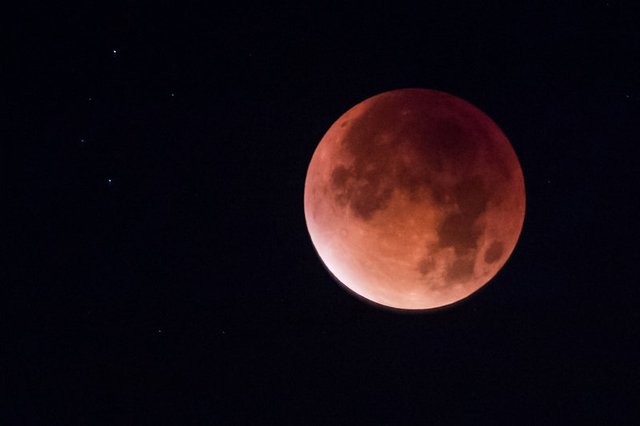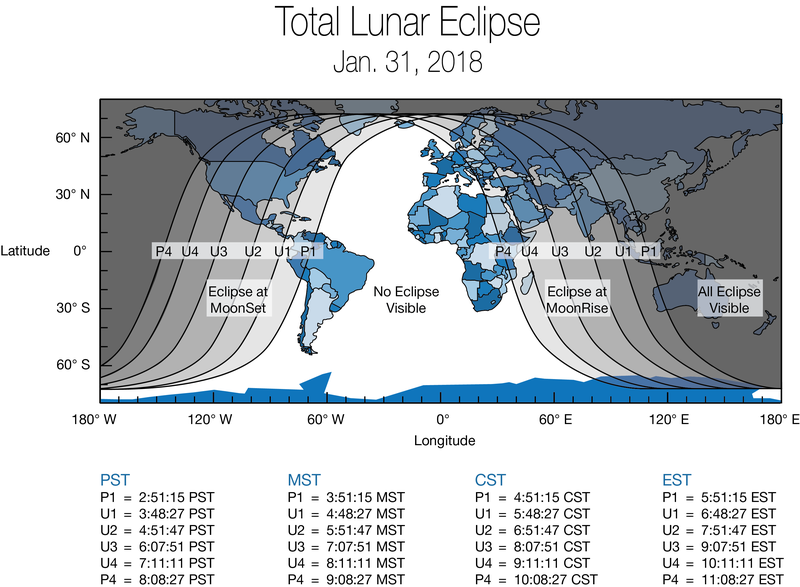today news Uncommon Super Nobility Moon: How To See It And What We Can Learn
 Set your wake up timer – early Wednesday morning, there's a lunar occasion that hasn't been seen since 1866.
Set your wake up timer – early Wednesday morning, there's a lunar occasion that hasn't been seen since 1866.
What's more, it'll be in any event halfway noticeable in every one of the 50 U.S. states – however the perspectives will show signs of improvement and better the more distant west you live.
We should separate this. This occasion – called a super nobility moon – is really three genuinely basic lunar happenings all event in the meantime.
What's more, researchers say that data accumulated amid the occasion could enable them to make sense of where to arrive a wanderer on the moon.
What is a super nobility moon?
The moon is full, and it's the second full moon of the timetable month, which has been named a blue moon. The moon is on a 28-day cycle with the goal that lone happens every so often – or, as you may state, once in a blue moon.
Next, the moon is known as a supermoon in light of the fact that it's particularly near the Earth, influencing it to seem bigger and brighter than regular. The moon doesn't circle Earth in a flawless circle – it's an oval, which implies there are times amid the circle that it is a great many miles nearer to Earth than others. Brian Day of NASA's Ames Exploration Center reveals to NPR that amid these circumstances, the moon can "show up 17 percent bigger than it does at its uttermost point in its circle."  Most intriguing to researchers, notwithstanding, is this is all concurring with an aggregate lunar obscuration. That is the reason this is likewise called a blood moon, Day says: "As the moon influences this nearby, full to moon way to deal with the Earth, it will go through the World's shadow and the World's shadow will make the moon show up a dark red shading."
Most intriguing to researchers, notwithstanding, is this is all concurring with an aggregate lunar obscuration. That is the reason this is likewise called a blood moon, Day says: "As the moon influences this nearby, full to moon way to deal with the Earth, it will go through the World's shadow and the World's shadow will make the moon show up a dark red shading."
"You have this awesome blend," Day says. "It's simply stacking up the plate with all the great things the moon can indicate us."
What's the most ideal approach to see it?
Everybody in the U.S. will have the capacity to see at any rate some part of the overshadowing, with the best perspectives in Western states.
On the East Drift, the shroud will start at 5:51 a.m. nearby time, however the moon will set before the finish of the overshadowing's totality. "The darker piece of Earth's shadow will start to cover some portion of the Moon with a rosy tint at 6:48 a.m. EST, however the Moon will set not as much as a half-hour later," NASA says. For East Liners, the best wager for good survey will be at around 6:45 a.m. ET.
It'll be less demanding to find in the Focal time zone in light of the fact that the moon will be higher in the sky when the overshadowing starts. The red shadow will be recognizable by 6:15 a.m. ET. In Mountain time, the pinnacle will be at around 6:30. "On the off chance that you need to arrive somewhere, you need to make sure you arrive somewhere that is protected and moderately shake free, however you likewise need to arrive somewhere that you know your foot cushions are not going to soak in to 18 inches or 2 feet or something to that effect and give you an awful day," Elphic says.
NASA's Ames Exploration Fixate is chipping away at plans to send a wanderer to one of the moon's posts – past missions have focused on territories close to the equator.
The shafts are thought to have real stores of water ice, and a mission could delineate this potential asset, which could be significant should people come back to the moon.
Researchers regularly have two or three open doors yearly to take these estimations amid add up to lunar shrouds